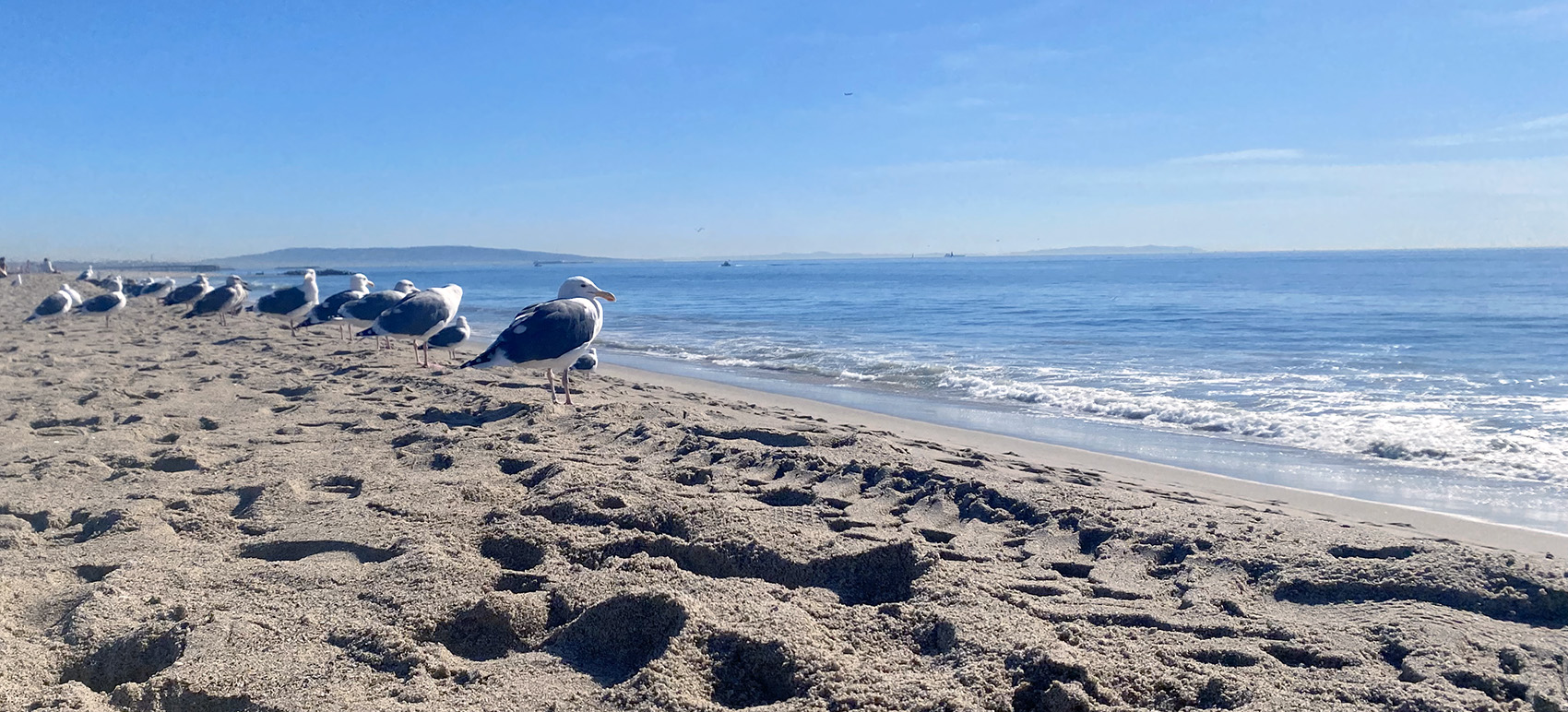Update on July 22, 2024: On Saturday, July 20, an estimated 15,000 gallons of raw sewage spilled into Ballona Creek after a sewer pipe broke, prompting official beach closures at the neighboring Venice and Dockweiler State beaches.
The summer crowds who turn a blind eye to beach advisory signs could be a cause for concern for public health officials and environmentalists in L.A.
As the seasonal heat draws bigger crowds to our beaches, a growing list of beach advisories and public health warning signs raise health and environmental concerns.
The L.A. County Department of Public Health last issued a warning for a handful of L.A.’s most popular beaches on July 5. Signs cautioning people against contact with ocean waters due to unsafe bacteria levels are posted at 16 local beaches. Exposure to these bacteria could result in personal illness, but the warnings also speak to the decay of the ecosystems we rely on.
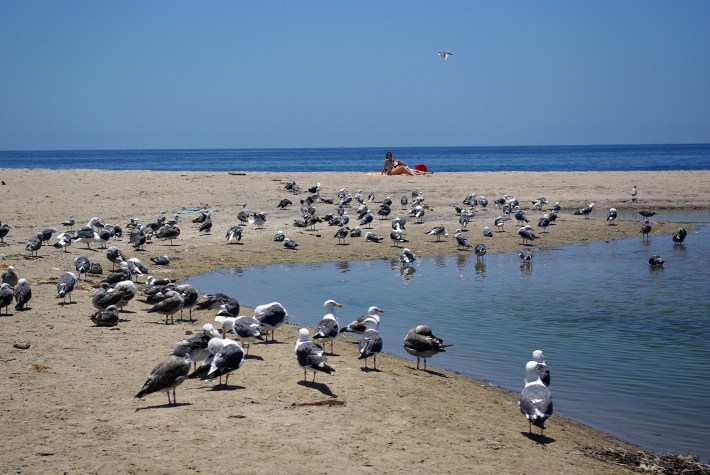
“The beach is supposed to be somewhere I shouldn’t have to worry about anything,” Stephen, 19, a resident of Westchester, tells L.A. TACO on the sands of Venice. “I think the beach for many of us is a very relaxing place, and trying to avoid trash every time you go is something that stays on your mind while you’re there.”
According to the L.A. County Public Health Department, the following L.A. beaches are consistently shown to harbor higher levels of pathogenic bacteria.
Malibu Lagoon at Surfrider Beach
Currently contaminated 100 yards up and down the coast from the public restrooms.
Santa Monica Canyon Creek at Will Rogers State Beach
Currently contaminated 100 yards up and down the coast from the creek.
Santa Monica Pier In Santa Monica
Currently contaminated 100 yards up and down the coast from the pier.
Inner Cabrillo Beach in San Pedro
The entire swim area is currently contaminated.
Mother’s Beach in Marina Del Rey
The entire swim area is currently contaminated.
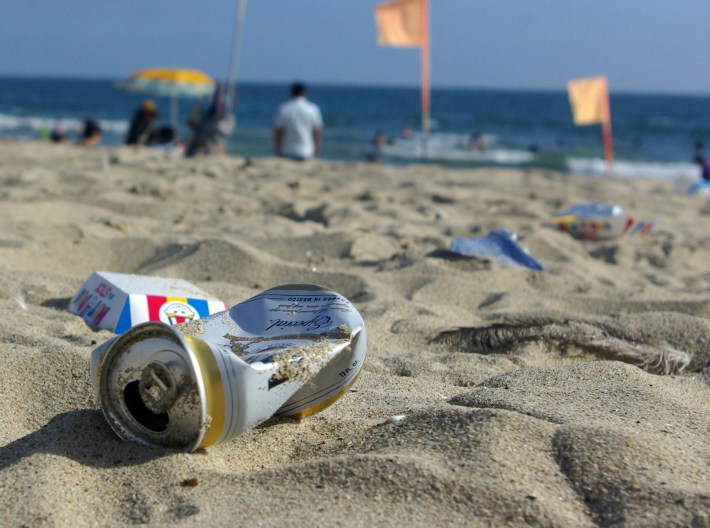
Water collection samples are taken in a joint effort between the L.A. County Department of Public Health Environmental Recreational Waters program, L.A. Sanitation, and the beach cities of Redondo, Hermosa, Manhattan, Palos Verdes, and Rancho Palos Verdes.
The Environmental Recreational Waters program takes samples once a week from April through October, beach sites once a week, and L.A. County Sanitation Districts take samples one to five times a week year-round.
Samples are taken from 51 surf zone locations, stretching from Malibu to San Pedro. Public Health Lab analyzes the samples for pathogenic bacteria, an indicator of fecal contamination, such as total coliform, fecal coliform (E. coli), and enterococci bacteria. Although lab results may take up to a week, the L.A. County Department of Public Health also uses NowCast, a computer software that predicts bacteria levels in the ocean.
L.A. County Public Health Department says pathogenic bacteria can be linked to litter, the seabirds it attracts, and runoff from the storm drains on our city’s streets.
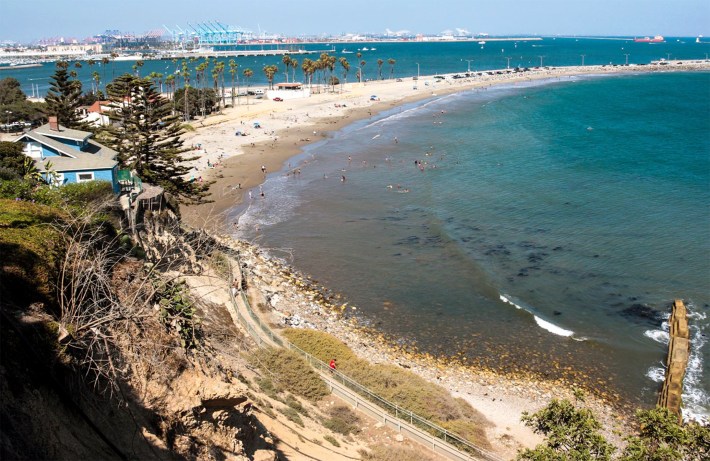
The roughly 100 billion gallons of runoff L.A. sees every year sweeps contaminants and pollutants, such as pesticides, heavy metals from businesses, trash, and other contaminants into the ocean water, according to L.A. Waterkeeper, an organization with a mission to protect L.A.’s inland and coastal waters through law, science, and community action.
“There are extensive efforts to restore some of our areas, but recent storms have washed away a lot of the work that was done,” says Michael Quill, marine programs director at L.A. Waterkeeper.
According to the L.A. County Department of Public Health, the most frequently tested beaches include Malibu Lagoon at Surfrider Beach, Santa Monica Canyon Creek at Will Rogers State Beach, the beaches below the Santa Monica Pier, the Pico-Kenter storm drain at Santa Monica State Beach, the Ashland Avenue storm drain at Santa Monica State Beach, the Herondo Street Storm Drain in Hermosa Beach, 28th Street Extension in Manhattan Beach, Inner Cabrillo Beach in San Pedro, and Mother’s Beach in Marina Del Rey.
As of July 5, though 16 beach advisories have been issued due to unsafe bacteria levels, the beaches remain thronged with sunbathers, swimmers, and people enjoying recreational water activities. Regular exposure to these contaminated waters could result in a public health outbreak of E. Coli.
“A disaster will show you what the Wizard of Oz is behind the curtain,” Quill says.
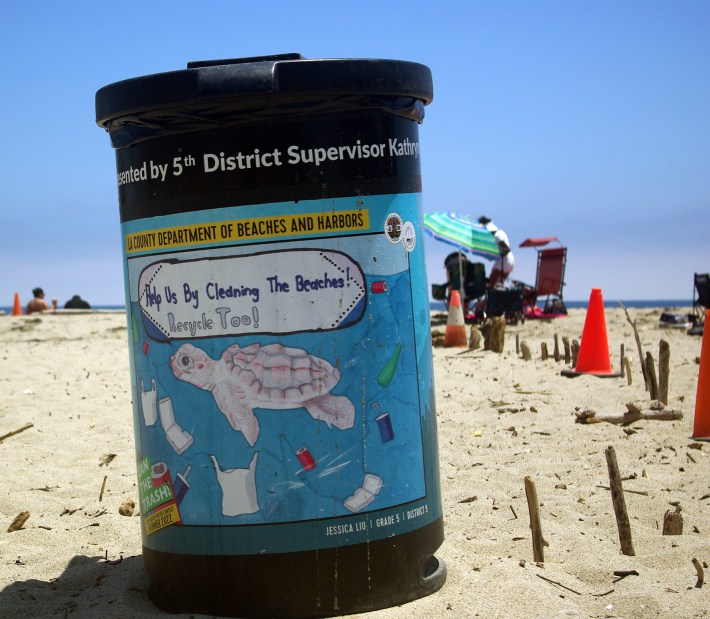
Meanwhile, Quill is on a boat about 60 times a year, watching over protected marine areas and collecting ocean samples with his team.
Quill is witnessing the decline of ocean quality first-hand. On dives, he doesn’t see the vibrant, flourishing sea life and kelp forests he once saw at the beginning of his career. Instead, he sees a barren sea floor that sea urchins have munched away due to the environmental imbalance set up over generations.
Industries and individuals have blamed each other for such poor water quality for decades. Corporations have created well-known campaigns, such as the “Don’t Be a Litterbug” phenomenon of the 1960s, honing in on individual trends that blamed consumers, such as in using plastics and littering, rather than on corporate responsibility or wrongdoing.
“I grew up with ‘Don’t Be a Litterbug,’” says Quill. “It was all our fault. It never occurred to me that we were being manipulated.”
Meanwhile, industries have caused harm through the widespread use of septic tanks and are culpable for environmental disasters such as oil spills, overfishing, GHG emissions, and other negatively impactful practices.
Aside from public beach cleanups, Quill claims faster ocean sampling reports, more industrial regulation and water quality studies, better storm drainage systems, and following environmentally-minded Indigenous leaders will be the most helpful solutions in restoring the quality of our beaches.
“I’m hoping we’ll raise consciousness, which will lead to changes in behavior, not only by individual action but by businesses that are just going to have to change their ways,” he says.
While the expected time frame of meeting goals to improve water quality in California stretches further into the future, public awareness is a more short-term victory that could keep the public safe from waterborne illness.
Before going to the beach, look at the L.A. County Public Health Department beach advisory list and stay updated on water quality trends through reports from the L.A. County Department of Public Health and L.A. Water Keeper.
Correction on Tuesday, July 16, 2024: All beaches with water use warnings due to high levels of pathogenic bacteria remain open under advisory conditions."
